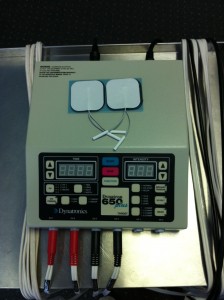A stress fracture is an incomplete fracture of bone caused by repetitive stress. It is found within a weight bearing bone, such as the bones within the foot. A stress fracture has also been termed a “hairline fracture”. Symptoms of a stress fracture include tenderness in the area and pain with weight bearing.
Stress fractures commonly occur in athletes that play sports requiring excessive running. They also occur in sedentary people who begin to exercise. This happens because their body is not used to exercise; therefore, it is overwhelmed by the repetitive weight bearing forces. Stress fractures can occur from muscle fatigue. Our muscles help to provide stability, support, and shock absorption for our bones. If these muscles become fatigued, our muscles ability to perform the role of shock absorption decreases. This causes increased risk for a possible fracture.
After a stress fracture, rehabilitation consists of decreasing weight bearing on the fractured bone to allow it to heal. After the bone heals, physical therapy is often recommended to strengthen the muscles surrounding the injured bone to return the patient back to all daily activities and to prevent re-injury.

